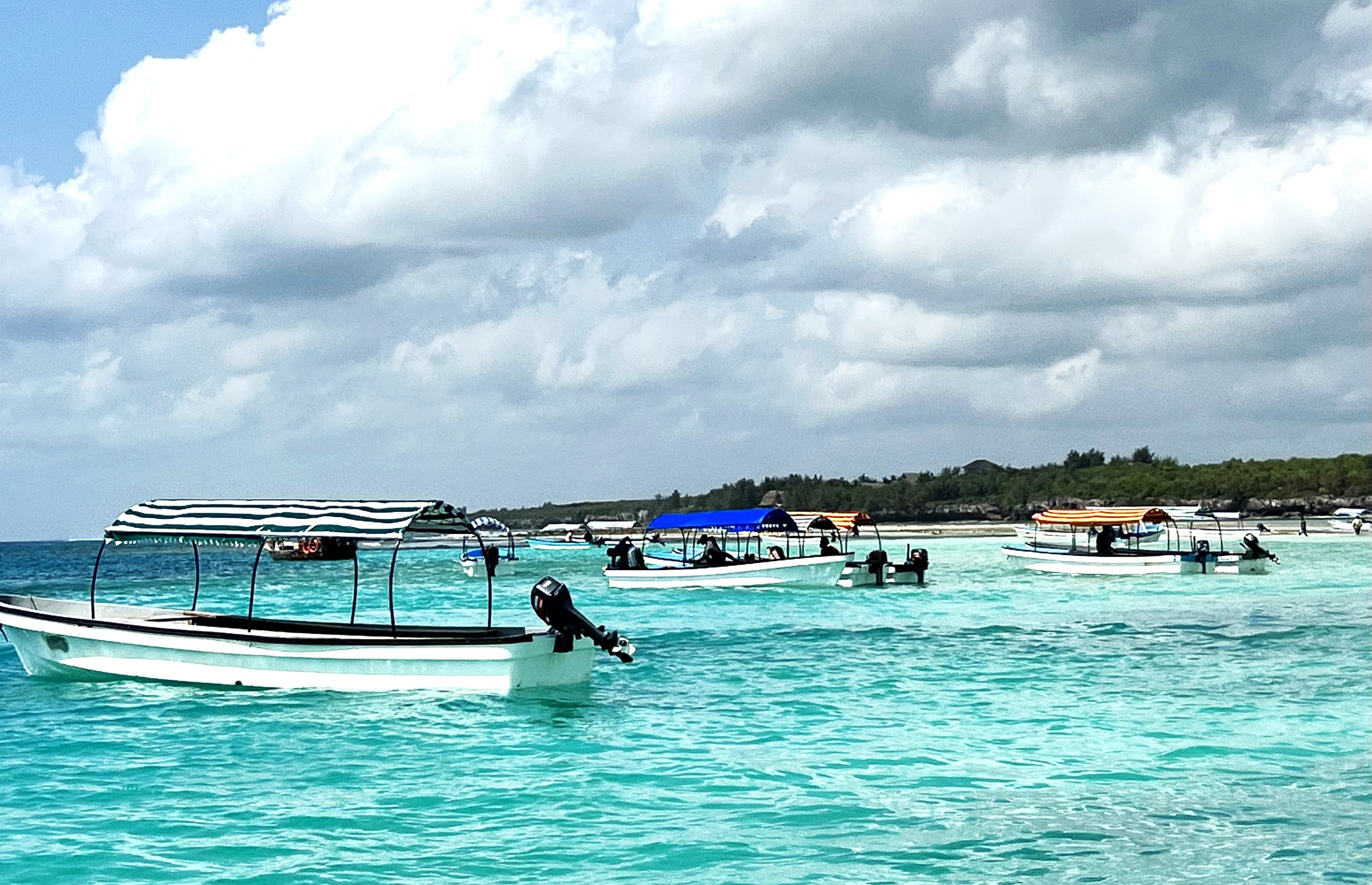
By Semiray Hadimoglu, Senior Programme Monitoring Associate, UNDP-BIOFIN, 9 September 2024
Zanzibar, an archipelago rich in marine and terrestrial ecosystems, is home to a variety of species, including fish, corals, dolphins and sea turtles. Biodiversity not only secures local livelihoods such as fishing and tourism but is also a global ecological asset. However, these ecosystems are under serious threat due to the destruction of their habitats and climate change. Marine Protected Areas (MPAs) have been established to protect these ecosystems, but traditional funding sources such as government grants, donations and visitor fees have proven insufficient for effective management, enforcement, and research.
Optimizing the collection of tourist fees and digital payments
In 2021, Zanzibar welcomed about 400,000 tourists. However, the fees paid by tourists to enter protected areas are significantly lower compared to mainland Tanzania and other Indian Ocean Island destinations. These fees have not been adjusted for years. In addition, the methods of collecting the fees, where tourists pay cash on entry, are vulnerable to cash handling risks, including losses through theft.
To close the funding gap, the BIOFIN initiative focuses on optimizing entry fees for MPAs and terrestrial protected areas (TPAs) while improving fee collection through digital payment systems.
The first step is to set the fees at a level that does not reduce the attractiveness of these protected areas for tourists. The structure and level of entrance and other fees are critical to the financial success of protected areas, considering accessibility and social value.
Setting fees requires careful consideration of various competing objectives. For example, fees must be high enough to cover all the costs of nature conservation management. At the same time, fees must be set at an optimal level that considers the fees of competing destinations and affordability for both local and international visitors.
The second point is to increase efficiency in the collection of entry and other fees to reduce losses and increase funding for conservation. The issue of more efficient collection of entry and other fees has been addressed by introducing digital payment systems in the protected areas. This approach aims to increase the sustainability of revenues and improve the financial capacity of area management, thereby supporting biodiversity conservation.
UNDP BIOFIN is working with various stakeholders, including the Ministry of Blue Economy and Fisheries (for the MPAs), the Ministry of Agriculture, Irrigation, Natural Resources and Livestock (which oversees the TPAs), and other partners such as the Ministry of Tourism and the Zanzibar Association of Tourism Investors, to review and optimize the current fee system.
The success of Mneemba Island Lodge with increased fees
The potential of an updated fee system is demonstrated by the example of Mneemba Island Lodge, located just 4.5 kilometers off the north-eastern coast of Zanzibar. It is managed via a concession. The partnership between the government and private stakeholders on Mneemba emphasizes the commitment to sustainable tourism with a focus on protecting the sensitive coral reefs and improving the quality of tourism. The increase in entrance fees from USD 3 to USD 25 has had several positive impacts on both the environment and local communities without changing the number of tourists wanting to visit the area:
- Increased funding for conservation: The rise in entrance fees has significantly boosted the financial resources available for managing and safeguarding marine areas. At Mneemba Island Lodge, 25% of the income from entrance fees goes to the Central Government, while 30% of the remaining income goes to the local communities. These funds are used to support community development projects such as training programs, infrastructure upgrades, and local conservation measures. This strategy ensures that the benefits of marine conservation extend beyond the protected areas and fosters positive relationships between conservationists and local communities. Furthermore, the additional funds are used for various conservation activities, including habitat restoration and scientific research, improving the overall effectiveness and sustainability of conservation efforts.
- Promoting sustainable tourism: Higher entrance fees help to regulate visitor numbers and reduce environmental impact. By setting fees that reflect the actual costs of managing and conserving marine areas, authorities can better control visitor numbers, which helps to minimize pressure on ecosystems.
Photo: The meeting with the authorities of Mneemba Island Lodge to discuss how conservation efforts can be improved to generate more revenue for investment in nature.
Increasing fees as a path to sustainable conservation
In conclusion, raising entrance fees, as demonstrated by BIOFIN in Zanzibar, is a viable solution to the financial challenges of marine conservation. By introducing higher fees and improving collection systems, MPAs can achieve greater financial stability and better conservation outcomes. The success of Mneemba Island Lodge shows that increased revenue not only supports conservation, but also promotes sustainable tourism and benefits local communities.
This dual benefit demonstrates how financial strategies can align economic incentives with conservation goals. While other regions are looking for similar solutions, the Zanzibar experience provides a valuable model for bringing together financial and environmental management that ultimately improves the long-term health and resilience of marine ecosystems.
Categories
Countries
Archives
- octobre 2021 (3)
- septembre 2021 (3)
- août 2021 (4)
- juillet 2021 (4)
- juin 2021 (10)
- mai 2021 (6)
- avril 2021 (3)
- mars 2021 (5)
- février 2021 (4)
- décembre 2020 (2)